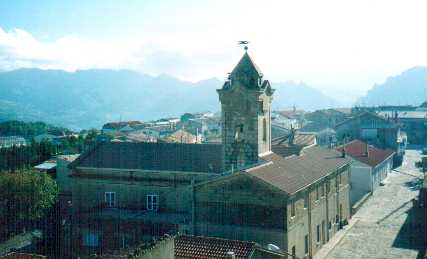“In Italy for thirty years under the Borgias, they had warfare, terror, murder, bloodshed. They produced Michelangelo, Leonardo da Vinci and the Renaissance. In Switzerland they had brotherly love, five hundred years of democracy and peace, and what did they produce –
the cuckoo clock!”
[Orson Welles to Joseph Cotton, The Third Man, 1949]
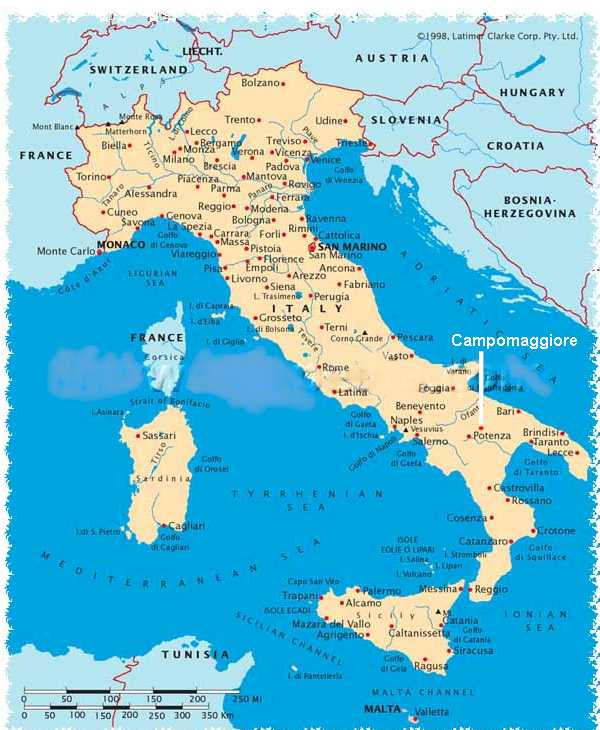
In the beginning was the word, and the word was – Pizza! Yes, pizza has pretty much been the defining concept behind our family since time immemorial. Yet with modern lifestyles, it is sobering to realize that family recipes, as well as family ties, can be lost within a generation or two [which makes this web-site all the more meaningful].
Campomaggiore
“Let’s be frank, the Italians’ technological contribution to humankind stopped with the pizza oven.” [Bill Bryson]
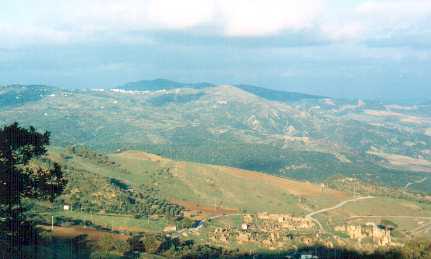
Our ancestors came from the small town of Campomaggiore in the Province of Potenza in the state of Basilicata, located in the mountainous area of central southern Italy. Contrary to popular perceptions – like the one expressed in the above quote – the region is quite industrialized. When Frank, Mary and their daughter Mary-Ann visited there in 1984, they met the former town priest, Fr. Joseph Filardi, pastor of Our Lady of Campomaggiore Church. Although he was not from this town, he felt compelled to write its history, some of which he shared with them.
He found the earliest mention of the town in the Etruscan histories. Its name then was “Vespesianus”. When Hannibal was trying to defeat the Romans, the town was called “Campus Maior” (Major Camp). It was a large militray camp used for training and defense as it sat high on a mountain. In 202 AD the town was referred to as “Cuma.” [Editor’s note: Considering that southern Italian dialects tend to contract words and phrases, it’s not hard to imagine how “Campomaggiore” could evolve into something like “Cuma,” the same way “compadre” turned into “gumba.” As you travel south, c’s turn into g’s, o’s into u’s, and the endings wind up in the Mediterranean.] Sometime after that, it reverted to its old name, which evolved to its current name, “Campomaggiore.”
In the 1860’s King Umberto I’s armies, led by Garibaldi, fought for and won unity and independence for Italy. After unification, the town was named “Commune Campomaggiore.” By 1984, Fr. Filardi had already completed the history of the town to 1353 AD; he was having trouble getting information past this date from the Cutinelli’s, a noble family of the area. During their 1984 visit, Frank, Mary and Mary-Ann found no living relatives, but they did not return empty-handed. Mary-Ann brought back some original documents including birth certificates, a marriage certificate, cavalry induction papers, and citizenship papers.
When Irene (Sr.), Shirley and John visited the town in the fall of 1997, they befriended a very helpful woman, Concetta, who told them that Fr. Filardi had finished the history before being transferred to another parish. Concetta agreed to send a copy of the book to John. [Editor’s note: When the package arrived a few months later, I was excited to find a handsome text along with a cassette of folk songs. Then something on the cover caught my attention: “Campomaggiore – Volume III.” …Does anyone want to go back to get Volumes I and II? To be continued…]
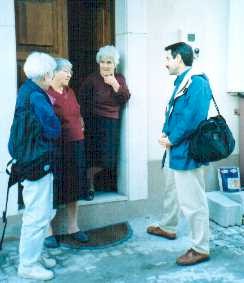
So let’s dig into the rich southern Italian genealogical soil and examine the roots of our ancestors. The setting is Campomaggiore in the mid-1800’s, and we’ll begin with the parents of our matriarch, Mariantonia Moreno Jasco. [Editor’s note: The letter “J” does not exist in Italian, so the name must have been changed or misspelled somewhere along the line, a common occurrence for those who landed at Ellis Island, NY. It was probably something like “Iasco.” Those of us who have gone back to Campomaggiore have found persons named “Iosco,” but we could trace no common ancestor.]
Jascos and Morenos
Michael Jasco, who came from a wealthy family, married twice in his lifetime. He and his first wife produced John and Joe Jasco, who wound up in New York City. [Editor’s note: That concludes what we know about that branch.]
His second wife, Maria Moreno, came from a poor family. She wanted to share the relative wealth of her new household, but did not want to be obvious about it. Michael, it seems, would keep certain things under lock and key, and he alone had the key. So whenever Maria had the chance, she would make extra food and sneak it to her mother.
When the gossips in the village discovered this, they told her husband, so he decided to carefully watch her prepare the meals. On one of the following days, he watched as she made bread. At one point he sneezed, and she took that opportunity to slide a loaf of dough behind the bread box. When she was done, she asked her husband to count the loaves of dough, which he did – twice. Then she coyly asked, “If I find any extra loaves, can I bring them to my mother?” He confidently replied, “Sure.” She then moved the bread box and picked up the dough. Upon seeing this he said, “If you can do this in front of my eyes, you can do anything you wish.” He then gave her the keys to all the locks in the house. [Editor’s note: There’s got to be a lesson in this… Always count the dough before they divy it up? Don’t trust your relatives? I’ll leave it up to you.] As a result of Maria’s experiences with her husband, she would tell her daughters, “Never marry a widower; they’re stingy and you’ll live to regret it.”
Michael and Maria had three children: Anna (who married a widower, Vastola, and lived to regret it), Frank, and Mariantonia (born in 1874), who would become Grandma Lucchino, the matriarch of our family in the New World. The following story describes one of her most vivid memories.
Earthquake
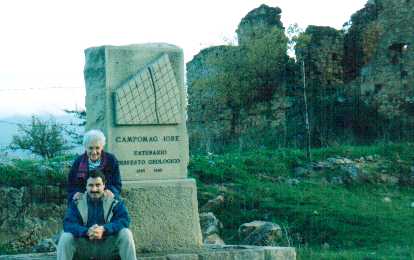
In the spring of 1885, an earthquake hit central southern Italy. [Editor’s note: Geologically speaking, Campomaggiore is in the same neighborhood with the volcano Vesuvius, whose ashes covered Pompeii.] At the moment of the quake, Mariantonia Jasco (Grandma Lucchino) was riding her donkey. The trembling of the ground was so severe that she was thrown off the donkey. (Her youngest children, Rachel and Frank, recall that when she related this story to them, she would show the scar that resulted from her fall.) The earthquake caused a land slide, and part of the town slid down the mountain about two kilometers. When it came to rest, all the structures, which included the Duke’s castle, were in ruins.
After recovering from the disaster, the mayor and town’s people decided to rebuild the town on its original site by extending it around the other side of the summit (away from the side that fell down). The residents referred to the ruins as Vecchio Campomaggiore (Old Campomaggiore), and to the reconstruction as Nuovo Campomaggiore (New Campomaggiore). This time period was the start of an era of major emigration from poor southern Italy to the promise of opportunities in the United States of America. The devastation of the earthquake was just one more reason for many people to leave Campomaggiore for America. And it probably was a factor considered by one Rocco Lucchino, our patriarch, whose story we turn to now.
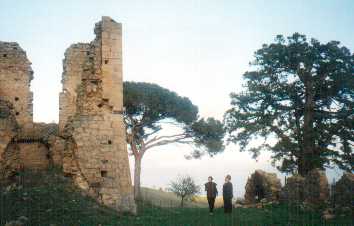
Lucchinos
Rocco Antonio Lucchino (Grandpa Lucchino) was born to Giuseppe and Teresa Perriello Lucchino on July 7, 1867. The Lucchino family lived on their own land in the vicinity of Campomaggiore. Their household included Rocco’s sister Carmela, brother Silverio (later married to Maria Luiga Venezia), and brother Michael. As a young man, Rocco served in the Italian Regimental Cavalry of King Umberto I, and was discharged on July 18, 1891 at the age of 24. Rocco had his own horse, which supports our oral history that he came from a landed family. He was an educated man who spoke Italian, French, Polish, Spanish and English.
Upon returning home from military service, Rocco and his friend, one Mr. Lorenzo, shared thoughts about a common topic of the day – emigrating to America. At this time Rocco, Mariantonia, and Mr. Lorenzo were all of marriageable age. [Editor’s note: Now the imbroglio begins.] Mariantonia was in love with, and hoping to marry, Mr. Lorenzo. [I guess no one ever asked his first name because everyone in our family always called him “Mr. Lorenzo.”] Her parents, however, would not approve of the marriage because everyone knew Mr. Lorenzo was making plans to go to America, and they did not want their daughter to leave Campomaggiore.
Instead, they arranged for her to marry Rocco Lucchino, and Mr. Lorenzo left alone for America. But Mariantonia did not want to marry Rocco because he was bow-legged from riding horses in the cavalry. However, when she found out Rocco, too, was planning to go to America, she changed her mind. [First the mother hides the loaves of dough, and now this! Do you see a pattern here?] But then her family found out about Rocco’s plans, and changed their minds about the arranged marriage. Evidently Rocco then made a deal with her parents: If they let her marry him, he wouldn’t take her to America.
The final result was that Rocco and Mariantonia were married on Saturday, January 7, 1893, and told everyone that for their honeymoon they were going to… America! [Rocco turns out to be no saint, either.] Family documents show that they had purchased their visa in November of 1892 in the provincial capital of Potenza, for departure from Naples to New York City via Boston. Grandma Lucchino (Mariantonia) related the story of how they had a second-class cabin on the ship, but their friends from Campomaggiore were in steerage. She and Grandpa went down to visit their friends and found them very sea-sick. It may have been an inauspicious arrival to the New World, but we have them to thank for our being here.
